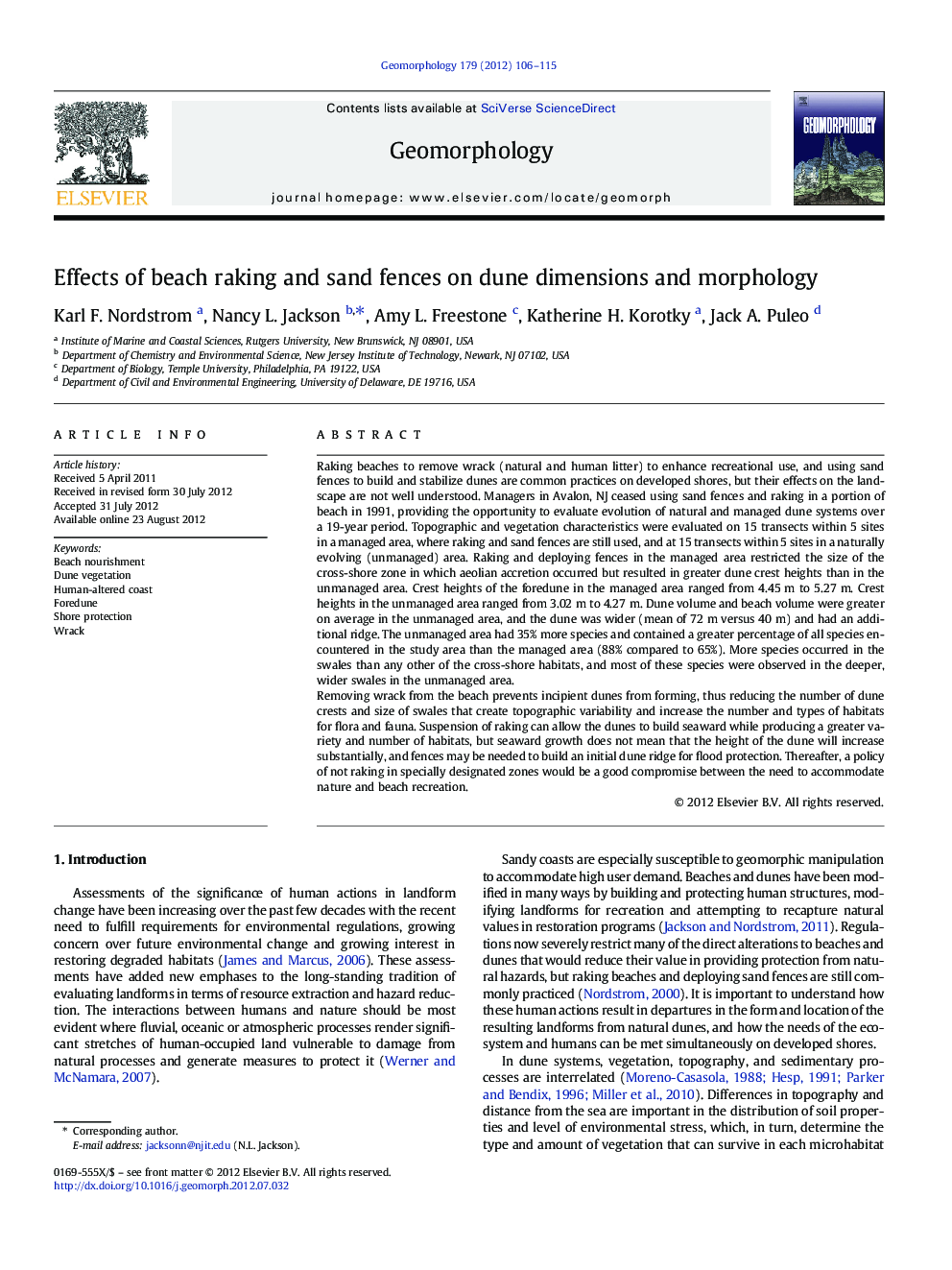| کد مقاله | کد نشریه | سال انتشار | مقاله انگلیسی | نسخه تمام متن |
|---|---|---|---|---|
| 4685056 | 1635469 | 2012 | 10 صفحه PDF | دانلود رایگان |

Raking beaches to remove wrack (natural and human litter) to enhance recreational use, and using sand fences to build and stabilize dunes are common practices on developed shores, but their effects on the landscape are not well understood. Managers in Avalon, NJ ceased using sand fences and raking in a portion of beach in 1991, providing the opportunity to evaluate evolution of natural and managed dune systems over a 19-year period. Topographic and vegetation characteristics were evaluated on 15 transects within 5 sites in a managed area, where raking and sand fences are still used, and at 15 transects within 5 sites in a naturally evolving (unmanaged) area. Raking and deploying fences in the managed area restricted the size of the cross-shore zone in which aeolian accretion occurred but resulted in greater dune crest heights than in the unmanaged area. Crest heights of the foredune in the managed area ranged from 4.45 m to 5.27 m. Crest heights in the unmanaged area ranged from 3.02 m to 4.27 m. Dune volume and beach volume were greater on average in the unmanaged area, and the dune was wider (mean of 72 m versus 40 m) and had an additional ridge. The unmanaged area had 35% more species and contained a greater percentage of all species encountered in the study area than the managed area (88% compared to 65%). More species occurred in the swales than any other of the cross-shore habitats, and most of these species were observed in the deeper, wider swales in the unmanaged area.Removing wrack from the beach prevents incipient dunes from forming, thus reducing the number of dune crests and size of swales that create topographic variability and increase the number and types of habitats for flora and fauna. Suspension of raking can allow the dunes to build seaward while producing a greater variety and number of habitats, but seaward growth does not mean that the height of the dune will increase substantially, and fences may be needed to build an initial dune ridge for flood protection. Thereafter, a policy of not raking in specially designated zones would be a good compromise between the need to accommodate nature and beach recreation.
► Raking beaches and deploying fences restrict the zone of aeolian accretion.
► These human actions create higher dunes than in natural areas.
► Natural foredunes are wider, with more ridges and swales.
► Raking the beach reduces the topographic variability that favors natural habitat.
► Human efforts may be needed to build higher protective dunes in unraked areas.
Journal: Geomorphology - Volume 179, 15 December 2012, Pages 106–115